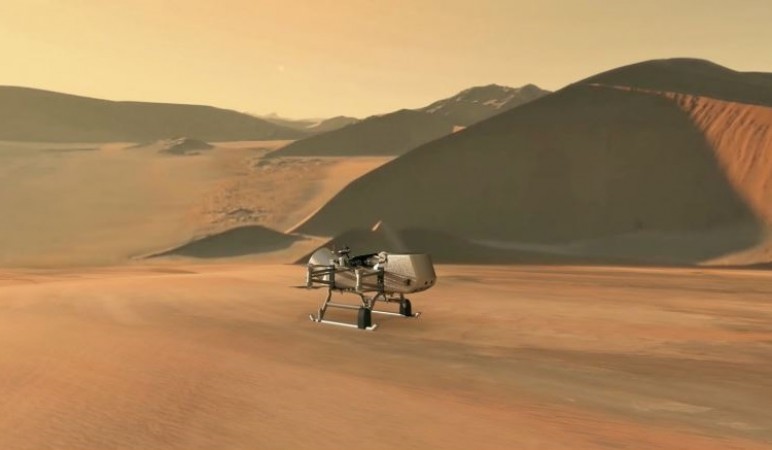
In an awe-inspiring endeavor, NASA is on the brink of a groundbreaking mission that involves cruising through the mysterious atmosphere of Saturn's colossal moon, Titan.
This ambitious undertaking, known as the Dragonfly rotorcraft lander mission, has Titan, Saturn's largest moon and the second-largest in our solar system, squarely in its sights. NASA, in a recent announcement, has disclosed that it has initiated a series of novel tests as part of its meticulous preparations for this extraordinary mission.
Scheduled for liftoff in June 2027, with an anticipated arrival sometime in the mid-2030s, the mission is poised to unfold over nearly three exhilarating years. Its primary objective: an in-depth exploration into the evolution of prebiotic chemistry, the study of how organic compounds come into existence, and the tantalizing prospect of past or existing life on this distant moon.
Titan possesses a unique distinction, being the solitary moon to boast a dense atmosphere and, aside from Earth, the only celestial body where irrefutable signs of liquid presence on the surface have been unearthed.
Spearheaded under NASA's renowned New Frontiers Program, the Dragonfly mission will traverse a smorgasbord of locales on Titan to scrutinize the moon's habitability. Titan's environment, according to NASA, mirrors Earth's nascent stages, offering a window into the enigmatic origins of life on our planet.
Yet, the impending expedition into the Titanian realm comes with its own set of challenges. NASA, in partnership with the Johns Hopkins University Applied Physics Laboratory located in Laurel, Maryland, has been meticulously testing the Dragonfly rotorcraft, a contraption designed to soar through the Titanian skies much like a drone. This rigorous assessment is aimed at ensuring the craft's operational viability within this peculiar environment.
Researchers have been diligently conducting a battery of tests at NASA's Langley Research Center, situated in Hampton, Virginia. The tests have rigorously scrutinized the craft's aerodynamic capabilities, particularly under the punishing conditions it is expected to encounter at different junctures of the mission.
In one of the most recent tests, the team fabricated a half-scale model of the Dragonfly lander to assess its descent once it touches down on Titan, as well as its subsequent flight across the enigmatic surface.
Bernadine Juliano, the lead scientist overseeing the tests at the Applied Physics Laboratory, shared her insights on the latest developments. "We tested conditions across the expected flight envelope at a variety of wind speeds, rotor speeds, and flight angles to assess the aerodynamic performance of the vehicle," she remarked in a statement featured on NASA's official website. "We completed more than 700 total runs, encompassing over 4,000 individual data points. All test objectives were successfully accomplished, and the data will help increase confidence in our simulation models on Earth before extrapolating to Titan conditions," Juliano noted with palpable enthusiasm.
The Dragonfly mission stands as a testament to humanity's unrelenting quest for knowledge and exploration, as NASA's audacious endeavor promises to unravel some of the universe's most beguiling mysteries.